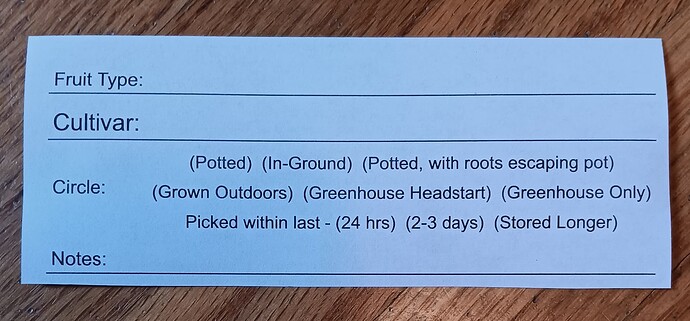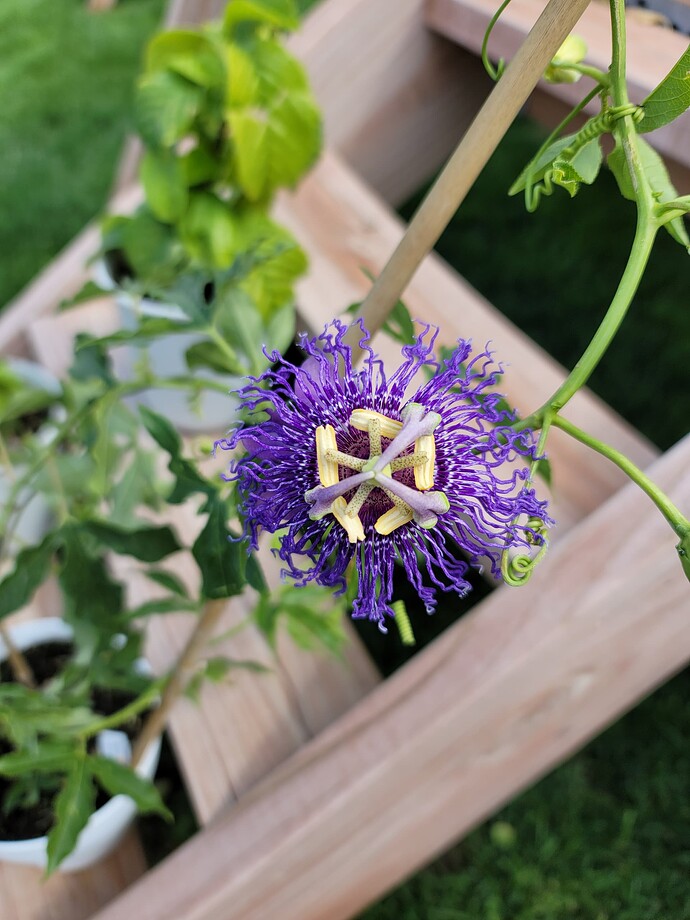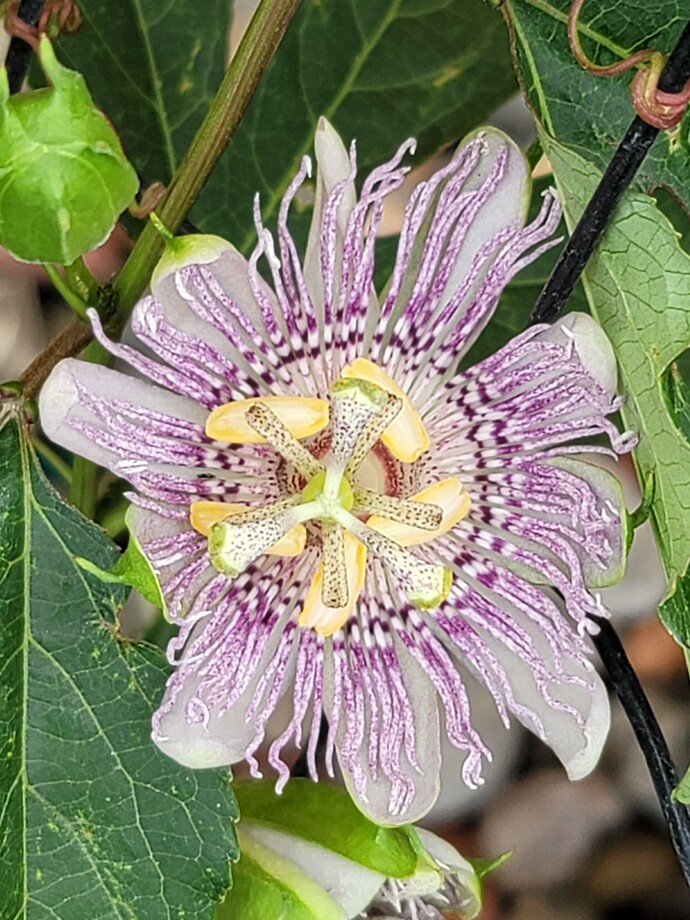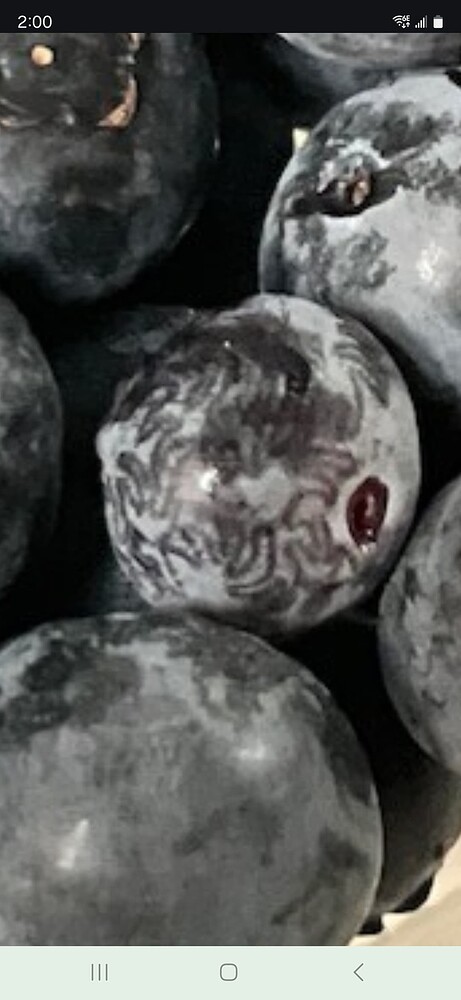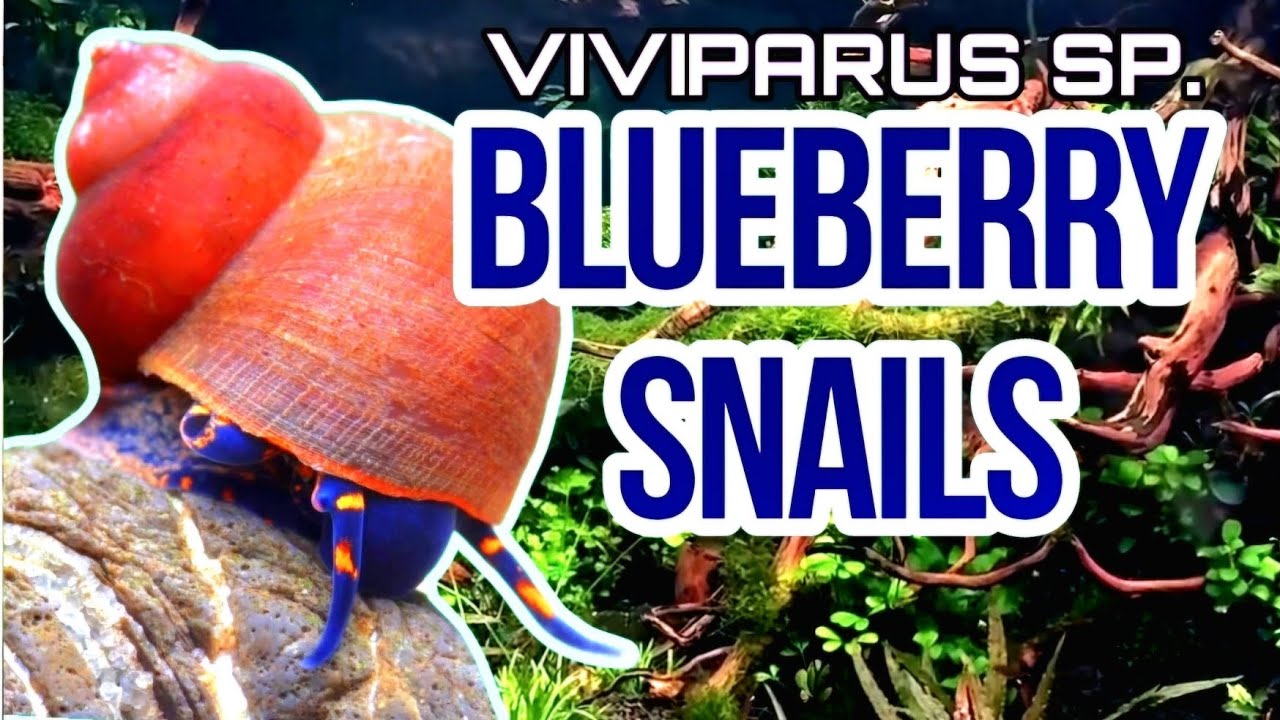Also logees’s is so overpriced and terrible. I only bought from them cause i was desperate ![]() don’t buy from logees unless they have something no one else has. 40$ for 1 tiny rooted cutting is b.s.
don’t buy from logees unless they have something no one else has. 40$ for 1 tiny rooted cutting is b.s.
I’m excited to put these label cards to use at the tasting tomorrow! For me, it’s not enough to taste a fruit. I want to know the extra info. ![]()
I love that, especially the last one
“Notes:”? haha
I know, you meant the part about how fresh the fruit is. That’s something I’ve never seen disclosed at any fruit tastings, but to me it’s crucial to be aware of when creating an opinion of the fruit quality.
NW Fruit’s ‘Apple and Pear Sample the Harvest Day’ in Mt. Vernon, Washington is next Sat, 10/12. Bags are provided for harvest. Cost is $15 for one-day pass.
The 7 acre planting of apples, pears, peaches, plums, cherries, walnuts, hazelnuts, almonds, berries, grapes, kiwi, etc. is a fantastic display of what’s possible here in the fruit realm.
Gary Moulton, author of many of the WSU fruit bulletins, and Sam Benowitz, founder of Raintree, host afternoon sessions. Emphasis this year is on rediscovering heirloom apple varieties and apple breeding.
Who brought
The One - fig
And can i bug you for a cutting like, yesterday ![]()
![]()
![]()
I’d love some passionfruit cuttings next spring if you have any available. Whatever type you think would be good, I’m game.
Do you ever plant them in the ground? Last year I watched a video posted by a passionfruit enthusiast in Australia, and one of his fundamental rules is to never plant them in the ground. He always uses containers and gets lots of fruit every year. So far I’ve kept the ones in my greenhouse in containers, but I get the sense they would have better yields if grown in Mother Earth. Do you have any experience comparing the different approaches?
I only grow 4 specimens in the ground outside, and all of those are maypop. Two are seedlings, from different mother plants in Missouri. The other two I got from Seattle and have no clue if they are clones or seedlings.
By planting specimen with genetic diversity I was trying to improve my odds of getting edible fruit. I’d read from a few sources online that doing so is the way to accomplish that with maypop. So far I can’t say whether or not it’s worked. They are still hanging from the vine, green and hollow, just like years past.
When I was a kid, growing up in San Diego, lots of friends and family had passionfruit vines. The maypop were always hollow, and never had very much fruit inside, just a bit of translucent jelly and seeds. Since the ‘good’ passionfruit are solid as a rock while hanging on the vine green, my guess is that the hollow maypop I have this year are likely just as bad as those I’ve grown in the past.
Do you have experience growing maypop? I’d imagine those are one of the few varieties you can grow outside, unprotected, in a place like Colorado.
Are you familiar with their symbolic importance in Catholicism? I just learned about that a couple of years ago when I was visiting the Carmel mission near Big Sur. It got me wondering if the priests were the ones who planted them all over California, during the mission era. I’ve visited many of the California missions from Southern Baja all the way up to Sonoma, and the passionfruit vines are quite common. Of course it might just be a coincidence.
I’m glad to hear you are not letting trauma from the past define you. I’ve seen countless members of my family allow past trauma to continue tormenting them years, even decades, after the abuse. I feel fortunate that plants have always been a refuge. I’ve never had to look very far for a place to feel tranquility. Even when I was a little boy I could wander around the subtropical landscapes, noshing on avocados, guavas, passion fruits, Natal plums, feijoa, guava and so many more fabulous fruits. My favorite was to pick the honeysuckle blossoms and drink the glorious nectar beside the hummingbirds.
Unfortunately my mom and I often ended up in homeless or battered women shelters, which was, as I’m sure you can imagine, quite traumatic. At least I had a short respite in the gardens of San Diego or along the Pacific shoreline, exploring the tide pools.
Not sure if this is a maypop variety but i grew these in Colorado as well cause they were pretty.
Never planted any in ground because I knew the native soil wouldn’t be good enough to help them stay alive or produce anything. With pots, you can control the soil and cater to their needs. Native soil would need to have high phosphorus to help them fruit.
I can cut up some of the vines on the weekend if you wanna stop by in Olympia. It takes like, months for them to root so by late spring/early summer, they should be good to go if you start now.
The fruit that i grew from the two cool colored ones weren’t good at all. Some were also hollow with very few seeds.
I’m not very religious at all. I believe in a lot of things so I’m more agnostic than anything.
The people who hate you will always be those who hate themselves the most. My refuge has always be online games and I’m pretty convinced now that my plants influence me to get more. Was never good at growing anything besides blueberries until recently ![]()
I’m very far from Olympia, in west-central Oregon. So it’s unlikely I can make it to Washington any time soon. But thank you for the generous offer.
Studying ethnobotanical research does not require an individual be aligned with any religious or spiritual affiliation. I have a significant interest in the cultivation and use of psychoactive plants for medicinal and shamanic purposes. Yet I do not subscribe to any creation myths associated with or expressed by shamanism, regardless of the peculiarity.
These stories are purely symbolic to me, but embedded within them are clues of great value, speaking to the origins of plant based medicines. Knowledge gleaned from communities with a shamanic heritage has been immensely helpful for botanists who are cataloging the plants of these tropical regions before modernity quite literally plows them into oblivion.
Indeed, my interest in Catholicism, as it pertains to the study of plants, has nothing to do with any personal religious devotion. Instead, my interest derives from the fact that, during the emergence of plant science in western civilization, many successful botanists were priests.
Most of us are familiar with Gregor Mendel, the 19th century Austrian catholic priest, who revolutionized the study of genetics by breeding peas. There were many other religious figures who did amazing botanical studies at a time when these kinds of endeavors were limited to the priestly class.
As a California native, I have long been fascinated by the sheer number of plants the Spanish priests brought to North America. Many people are surprised to learn that the Jesuits brought citrus and dates to California as early as the 16th century. The gardens surrounding the missions at many locations are absolutely phenomenal. Some even have detailed historical narrative, explaining the kinds of plants and plant breeding undertaken by the priests at these remote outposts. At the time these missions were quite literally the edge of civilization. It’s remarkable how much they accomplished with merely pen and paper and a keen eye for observation.
The priests also brought the passionfruit vines to California from South America. And they did so for deeply religious reasons. If you look at the blossom of a passionfruit vine you can see the distinct image of a cross. The name passion is in fact a reference to the passion of the Christ. The imagery of the passionfruit blossom became powerful with the Mexican people, symbolic of the syncretic Catholicism practiced by many in Mexico, blending shamanism with traditional liturgical teachings.
Ultimately, I think it’s fascinating that many benefits for modern science and agriculture arose from a kind of religiosity that is now heavily aligned with anti-scientific, anti-intellectual propaganda. Strange indeed.
Morton rabbiteye blueberry, brix 15, bringing up the rear after high bush blueberries are done or hanging on to watery berries.
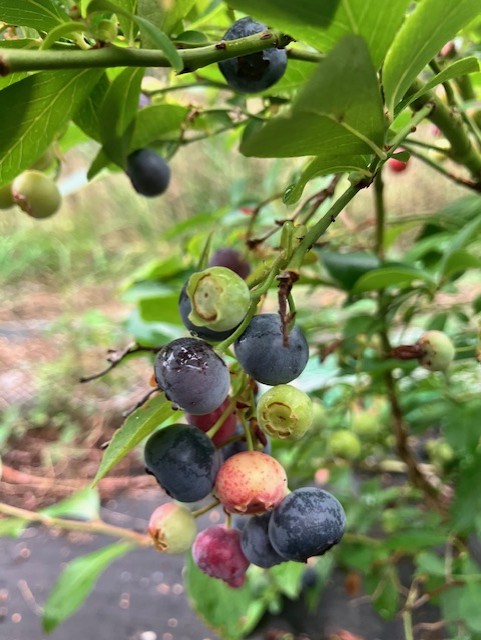
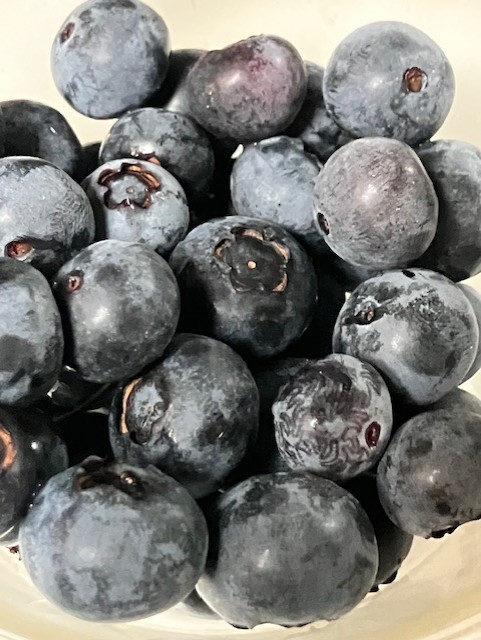
I know pic looks strange! Close up even more strange.
This is a pic shot outside instead of indoors. The surface still looks a bit little wavy.
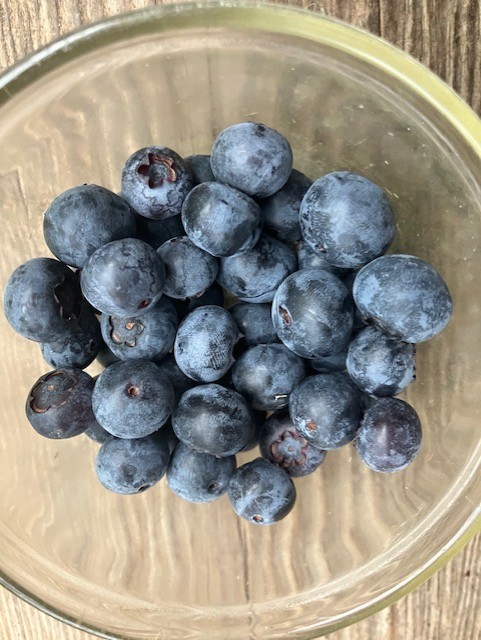
In real life they are perfectly smooth. I guess the blueberry’s natural bloom just does not photograph well.
that looks like the trails snails leave when they graze algea
@horna
Hmmm - interesting that you mention snails. There is a tiny snail, about 2mm, that I sometime see climbing out of a bowl of freshly picked blueberries. I saw one when I picked this bowl. They do no damage to the fruit itself. Maybe they feed on the bloom? That would be quite amazing!
This is what I love about the forum! People ask questions …and the answers lead you down all kinds of paths. I googled ‘blueberry snails’ and it turns out they are a must-have item for aquarium owners as algae eaters!
Not sure if the snail I find is what the hobbyists are referring to. Next time I see one, I’ll put it under a stereo microscope to identify its details.
Be careful cause snails can harbor brain eating amoebas ![]()
In Hawaii that’s true.
Given how tiny the lines are, lack of slime trail and lack of any chewing damage, I am going to venture to guess that the pattern was caused by moisture accumulating and beading up on the berry at some point which pushed around the waxy bloom to cause a pattern. Similar to the ripples you will see in the sand along a beach.
@JohannsGarden
Thanks - perhaps the simplest answer is best!!
As for the occasional tiny snail, not sure why they are attracted to blueberries.
Pattern may be just a coincidence.
Whenever you make it up here, let me know! I plan on growing Passionfruit for years to come ![]()
